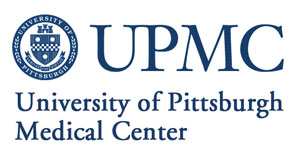ILLUMENATE Pivotal Post-Approval Study (PAS)
| Status: | Active, not recruiting |
|---|---|
| Conditions: | Peripheral Vascular Disease |
| Therapuetic Areas: | Cardiology / Vascular Diseases |
| Healthy: | No |
| Age Range: | 18 - Any |
| Updated: | 2/7/2018 |
| Start Date: | April 14, 2017 |
| End Date: | September 2020 |
ProspectIve, Randomized, SingLe-Blind, U.S. MuLti-Center Study to EvalUate TreatMent of Obstructive SupErficial Femoral Artery or Popliteal LesioNs With A Novel PacliTaxel-CoatEd Percutaneous Angioplasty Balloon Pivotal Post-Approval Study
The ILLUMENATE Pivotal PAS is a continued follow-up study which will include 300 subjects
from forty-three (43) sites across the United States and Austria previously enrolled in the
ILLUMENATE Pivotal pre-market study to evaluate the Stellarex DCB compared to the PTA control
device for the treatment of de-novo or post-PTA occluded/stenotic or reoccluded/restenotic
(except for in-stent) SFA and/or popliteal arteries.
from forty-three (43) sites across the United States and Austria previously enrolled in the
ILLUMENATE Pivotal pre-market study to evaluate the Stellarex DCB compared to the PTA control
device for the treatment of de-novo or post-PTA occluded/stenotic or reoccluded/restenotic
(except for in-stent) SFA and/or popliteal arteries.
The objective of this continued follow-up of ILLUMENATE Pivotal Study subjects is to
demonstrate the long term safety and effectiveness of the Stellarex DCB.
Each enrolled subject will be followed for 5 years (60 months) after treatment. A follow-up
office visit will occur at 24 and 36 months. A follow-up telephone contact or an optional
office visit will occur at 48 and 60 months.
demonstrate the long term safety and effectiveness of the Stellarex DCB.
Each enrolled subject will be followed for 5 years (60 months) after treatment. A follow-up
office visit will occur at 24 and 36 months. A follow-up telephone contact or an optional
office visit will occur at 48 and 60 months.
Inclusion Criteria - From ILLUMENATE Pivotal IDE population TP-1397E
Study subjects must fulfill the following clinical criteria:
1. Symptomatic leg ischemia, requiring treatment of the superficial femoral artery (SFA)
and/or popliteal artery.
2. Greater than or equal to 18 years of age.
3. Willing to provide written informed consent, and capable and willing to comply with
all required follow-up evaluations within the defined follow-up visit windows.
4. Will not undergo other planned vascular interventions within 14 days before and/or 30
days after the protocol treatment (successful treatment of ipsilateral and
contralateral iliac permitted prior to enrollment).
5. Life expectancy >1 year.
6. Rutherford-Becker classification of 2, 3 or 4.
Study Subjects must fulfill the following angiographic criteria:
7. De novo or restenotic lesion (except for in-stent restenotic lesion) >70% within the
SFA and/or popliteal artery in a single limb.
8. Single lesion which is ≥3 cm and ≤18cm in length (by visual estimation). NOTE: Tandem
lesions can be treated. A tandem lesion is defined as two distinct lesions with 3 cm
or less of healthy vessel separating the two diseased areas. The total cumulative
length of the tandem lesions, including the healthy vessel, must not exceed 18 cm.
9. Lesion is treatable by no more than two (2) study devices.
10. Successful wire crossing of the lesion. The guidewire advancement should not be
indicative of the presence of fresh thrombus in the lesion.
11. Target reference vessel diameter is ≥4 mm and ≤6 mm (by visual estimation).
12. Inflow artery is patent, free from significant lesion stenosis (≥50% stenosis is
considered significant) as confirmed by angiography. Treatment of a target lesion is
acceptable after successful treatment of inflow artery lesion(s). NOTE: Successful
inflow artery treatment is defined as attainment of residual diameter stenosis <30%
without death or major vascular complication.
13. Target limb with at least one patent (less than 50% stenosis) tibio-peroneal run-off
vessel confirmed by baseline angiography or prior magnetic resonance (MR) angiography
or computed tomography (CT) angiography (within 45 days prior to index procedure).
NOTE: treatment of outflow disease is NOT permitted.
Exclusion Criteria -
Subject with any of the following clinical criteria should be excluded:
1. Females who are pregnant, lactating, or intend to become pregnant, or males who intend
to father children during study participation.
2. Known aortic aneurysm(s) > 5 cm.
3. Contraindication to dual anti-platelet therapy.
4. Known intolerance to study medications, paclitaxel or contrast agents that in the
opinion of the investigator cannot be adequately pre-treated.
5. Current participation in an investigational drug or another device study.
6. History of hemorrhagic stroke within 3 months.
7. Previous or planned surgical or interventional procedure within 14 days before or 30
days after the index procedure (successful treatment of ipsilateral and contralateral
iliac permitted prior to enrollment).
8. Prior endovascular treatment of target lesion by percutaneous transluminal angioplasty
or any other means of previous endovascular treatment (e.g. stents/stent grafts,
cutting balloon, scoring balloon, cryoplasty, thrombectomy, atherectomy, brachytherapy
or laser devices) within six months of the index procedure, or any previous placement
of a bypass graft proximal to the target lesion.
9. Treatment of lesions in the contralateral limb with the CVI Paclitaxel-coated PTA
Catheter.
10. Use of the CVI Paclitaxel-coated PTA Catheter in other than a single treatment
session.
11. Chronic renal insufficiency (dialysis dependent, or serum creatinine >2.5 mg/dL within
30 days of index procedure).
Subject with any of the following angiographic criteria should be excluded:
12. Significant contralateral or ipsilateral common femoral disease that requires
intervention during the index procedure.
13. No normal proximal arterial segment of the target vessel in which duplex ultrasound
velocity ratios can be measured.
14. Known inadequate distal outflow.
15. Acute or sub-acute thrombus in the target vessel.
16. Aneurysmal target vessel.
17. Use of adjunctive therapies (i.e. laser, atherectomy, cryoplasty, scoring/cutting
balloons, brachytherapy) during the index procedure in the target lesion or target
vessel.
18. Treatment of the contralateral limb during the same procedure or within 30 days
following the study procedure (exclusive of the iliac arteries which can be treated
prior to enrollment).
19. Presence of concentric calcification that precludes PTA pre-dilation.
20. Prior stent placement in the target vessel.
21. Residual stenosis of greater than 70%, stent placement or flow-limiting (Grade D or
greater) dissection following pre-dilation.
We found this trial at
35
sites
Mount Sinai Med Ctr Founded in 1852, The Mount Sinai Hospital is a 1,171-bed, tertiary-care...
Click here to add this to my saved trials
Click here to add this to my saved trials
Click here to add this to my saved trials
Emory University Hospital As the largest health care system in Georgia and the only health...
Click here to add this to my saved trials
Northside Hospital Northside Hospital-Atlanta (in Sandy Springs) opened in 1970. The original facility had 250...
Click here to add this to my saved trials
Click here to add this to my saved trials
Click here to add this to my saved trials
Click here to add this to my saved trials
University of Virginia The University of Virginia is distinctive among institutions of higher education. Founded...
Click here to add this to my saved trials
Click here to add this to my saved trials
Cleveland Clinic Foundation The Cleveland Clinic (formally known as The Cleveland Clinic Foundation) is a...
Click here to add this to my saved trials
Click here to add this to my saved trials
Click here to add this to my saved trials
Click here to add this to my saved trials
Click here to add this to my saved trials
Click here to add this to my saved trials
Click here to add this to my saved trials
Click here to add this to my saved trials
Click here to add this to my saved trials
Click here to add this to my saved trials
Click here to add this to my saved trials
Click here to add this to my saved trials
Click here to add this to my saved trials
Click here to add this to my saved trials
Yale University School of Medicine Founded in 1810, the Yale School of Medicine is a...
Click here to add this to my saved trials
Click here to add this to my saved trials
Click here to add this to my saved trials
Click here to add this to my saved trials
University of Pittsburgh Medical Center UPMC is one of the leading nonprofit health systems in...
Click here to add this to my saved trials
Click here to add this to my saved trials
Click here to add this to my saved trials
Click here to add this to my saved trials
Click here to add this to my saved trials
Metro Health Hospital Metro Health is an integrated healthcare system offering expert, award-winning care that
Click here to add this to my saved trials
Click here to add this to my saved trials







